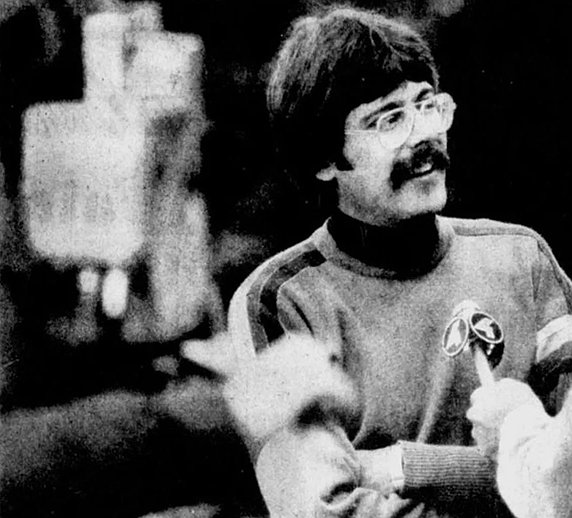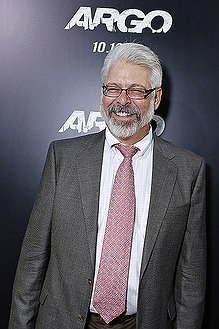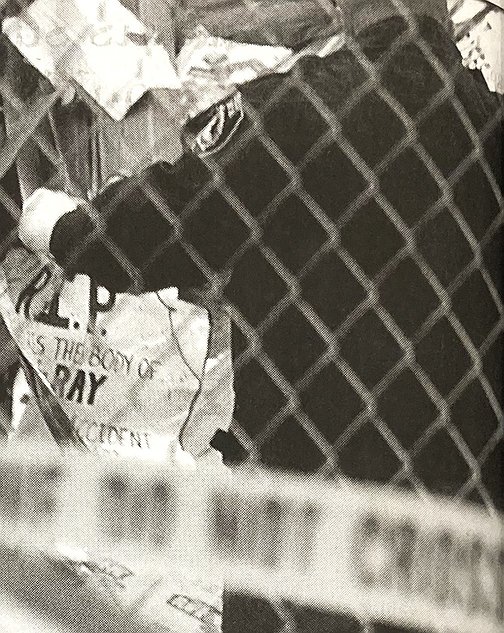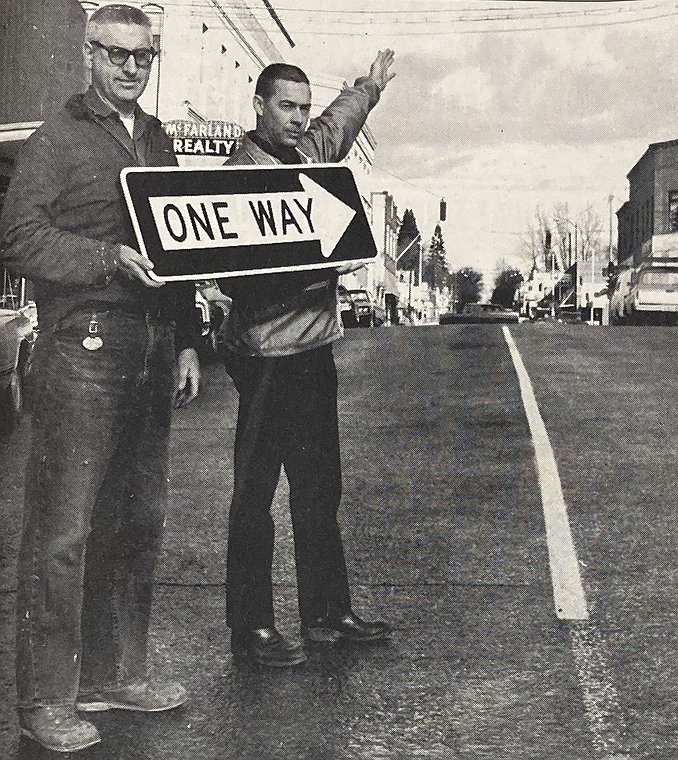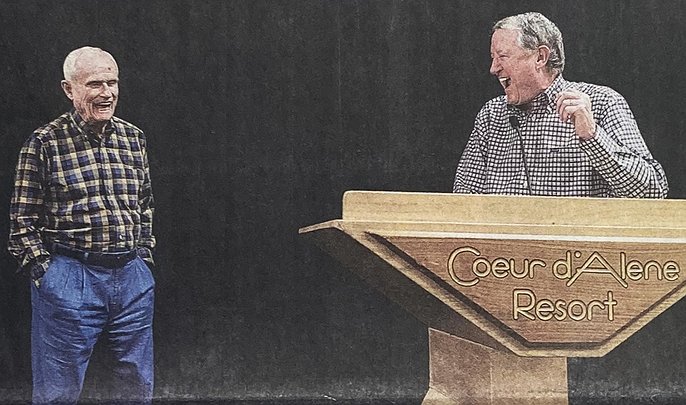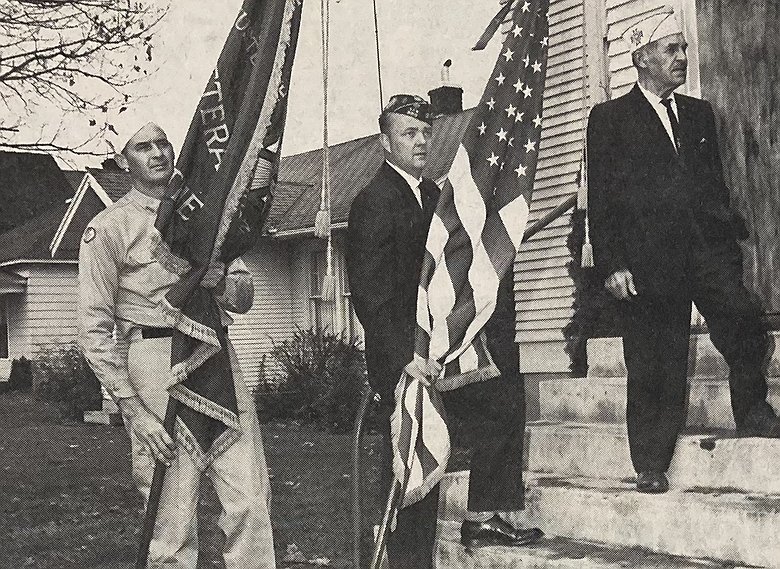HUCKLEBERRIES: Movies aren't history
We know how things turned out because we saw the end of the movie.
On Nov. 4, 1979, Iranian revolutionaries captured more than 50 Americans at the U.S. Embassy in Tehran and then held them hostage for 444 days.
But six others hid for nearly three months before escaping Hollywood style.
In 2013, director Ben Affleck won an Oscar for best movie for his depiction of their rescue: “Argo.”
Forty-five years ago, however, Lee Schatz’s parents knew only that their Post Falls High and University of Idaho graduate wasn’t captured with the other diplomats.
But they didn’t know much else.
“We were told that the State Department had heard from Lee and that he wanted to be sure and tell the folks he was OK,” Schatz’s mother, Marge, told managing editor Doug Clark of the Coeur d’Alene Press for an exclusive story Nov. 10, 1979. “Lee told them to tell us he is not one of the hostages and for us not to believe anything you read or hear in the media.”
A United States attache in Iran at the time, H. Lee Schatz, 31, was nervous when he visited home for a few days in September 1979. His mother told Clark: “He knew the situation (in Iran) was tense.”
Schatz, who grew up on the Rathdrum Prairie, was stationed at the U.S. Embassy by the Foreign Agricultural Service. He was a grain specialist. And he had asked for the assignment. He would later tell The Press that he wanted to witness firsthand the Shia Islamic country in its post-revolutionary transition. Said he: “You don’t often see history made.”
To his everlasting credit, Clark didn’t report that Schatz’s mother also told him that Swedish diplomats were hiding her son: “I couldn’t do it,” Clark said in a 2013 column for The Spokesman-Review. “Publishing something that might get Schatz nabbed or worse was something beyond me.”
The Swedes concealed Schatz for almost two weeks. Then, for more than two months he hid in lodgings supplied by the Canadians with five other American diplomats: Robert Anders, Cora Amburn-Lijek, Mark Lijek, Joseph Stafford and Kathleen Stafford.
The six, according to Clark, lived in relative ease, eating well and even playing Scrabble.
Meanwhile, the CIA and Canada hatched a clever scheme to get them home. They would pretend to be part of a Canadian film crew scouting locations in Iran for a space adventure.
On Jan. 29, 1980, armed with fake passports supplied by Canadians, Schatz and the others were guided to the Tehran airport by a CIA operative, presented their bogus papers and left without incident.
In the movie, the Iranians smelled a rat at the last minute and chased after the diplomats.
“It’s a movie, guys, it’s not history,” said Schatz, who enjoyed the film.
Also, he didn’t mind being referred to in “Argo” as “the oddball from Idaho.”
“More of an individual from Idaho,” Schatz told Clark, chuckling. “We have a different approach.”
A coroner’s tale
One of the strange deaths investigated by Dr. Bob West, in his 40 years as Kootenai County coroner, involved a homeless man who crawled into a trash bin to sleep.
And was found one or two days later compacted with a load of cardboard at a recycling plant on Industrial Way.
The police knew the transient’s name from the medical bracelet on his right wrist and a picture identification card.
And it wasn’t Ray.
On Oct. 29, 2004, workers at Bluebird Recycling found the 42-year-old man at the mid-point of a 12-foot pile of cardboard, delivered by Waste Management.
Dr. West decided that the man had been crushed to death.
Curiously, police found a hand-written sign near the squashed body as they removed cardboard, one sheet at a time. It read: “R.I.P.” in the shape of a graveyard headstone. And: “Here Lies Ray.”
The story of the unfortunate drifter and others, including several high-profile local murders, can be found in Dr. West’s graphic 2014 book: “It Can (And Does) Happen Here!”
Our man in Congress
Few candidates from North Idaho win congressional or statewide offices. But there was one man from Coeur d’Alene who served for two years in the U.S. House of Representatives, from 1951-52: Dr. John T. Wood.
Dr. Wood also served as Coeur d’Alene’s third mayor and was credited with helping discover Rocky Mountain Tick Fever.
Dr. Wood, who practiced medicine here for almost 50 years, lost his re-election bid in 1952.
He was a bitter and outspoken foe of the United Nations and this country’s involvement in it. After his return from Washington, D.C., he continued his fight against the world body by writing a weekly column for The Press: “Washington Impressions.”
On Nov. 1, 1954, the day his final column was published in this newspaper, he saw patients. He became ill that night and died early the next morning at age 75, with wife Magaret and son William at his side.
Dr. William T. Wood served as Kootenai County coroner from 1946 to 1984 before being replaced by the aforementioned Dr. West.
Huckleberries
• Poet’s Corner: It’s dark at five, and sun/is craved —/where’s all that daylight that/we saved? — The Bard of Sherman Avenue (“Return to Standard Time”).
• Only One Way: They weren’t always one-way — Third and Fourth streets, that is. At 8 a.m. Friday, Nov. 7, 1969, the two streets, which ran to and from downtown Coeur d’Alene, were transformed by city council decree from two-way traffic to the current configuration. Street Superintendent Reed Walker supervised the switch. And traffic flowed happily ever after.
• Solid Golden: The late Duane Hagadone singled out one employee for special honor during the 2019 After 5 Club luncheon: Jerry Jaeger. The event recognized employees who had worked for Hagadone Hospitality for at least five years. The two partners had shared ownership of the company since 1983. Few marriages last that long, let alone partnerships.
• Oopsy: In last week’s Huckleberries column, Dean Haagenson’s construction company was incorrectly identified. Dean co-founded Contractors Northwest.
• Has It Been … 10 years since the homeless camp behind Target was evicted by a Spokane property owner? The inhabitants caused little trouble, except for an occasional knifing, fire and a wandering panhandler. “It’s been fun,” a vagabond told The Press for a story Oct. 30, 2014. “I thought it would last forever in here.” Once the campers moved, a new owner leveled the trees. The homeless are still here, of course. But further out of mind.
Parting shot
Speakers at the various local Veterans Day events Monday should be in better humor than Dr. Victoria Carbury was 60 years ago.
On Nov. 11, 1964, Dr. Carbury feared how this country was trending.
In her Coeur d’Alene speech, she decried that freedom “has become a word to be mocked, not respected.”
She lamented that she’d seen Nazi uniforms on U.S. streets. And that the Bible was missing from schools. And predicted that “In God We Trust” would be removed from our money.
She viewed Veterans Day as “another day of remembrance, another day nearer the time when we will give an account of the stewardship of freedom bought for us with the blood of our comrades.”
We may be as divided today as we were in the ‘60s. But we still have “In God We Trust” on our currency. In that, there is hope.
• • •
D.F. (Dave) Oliveria can be contacted at dfo@cdapress.com.










